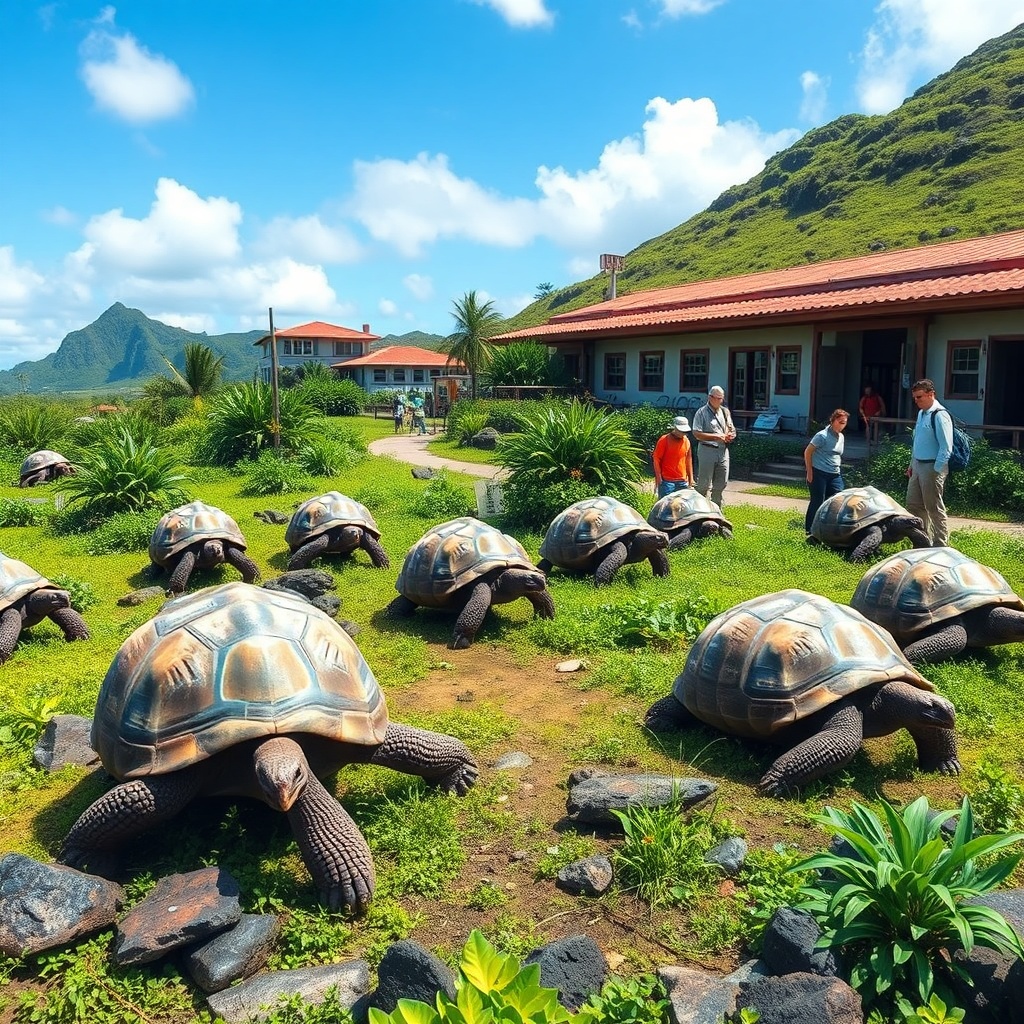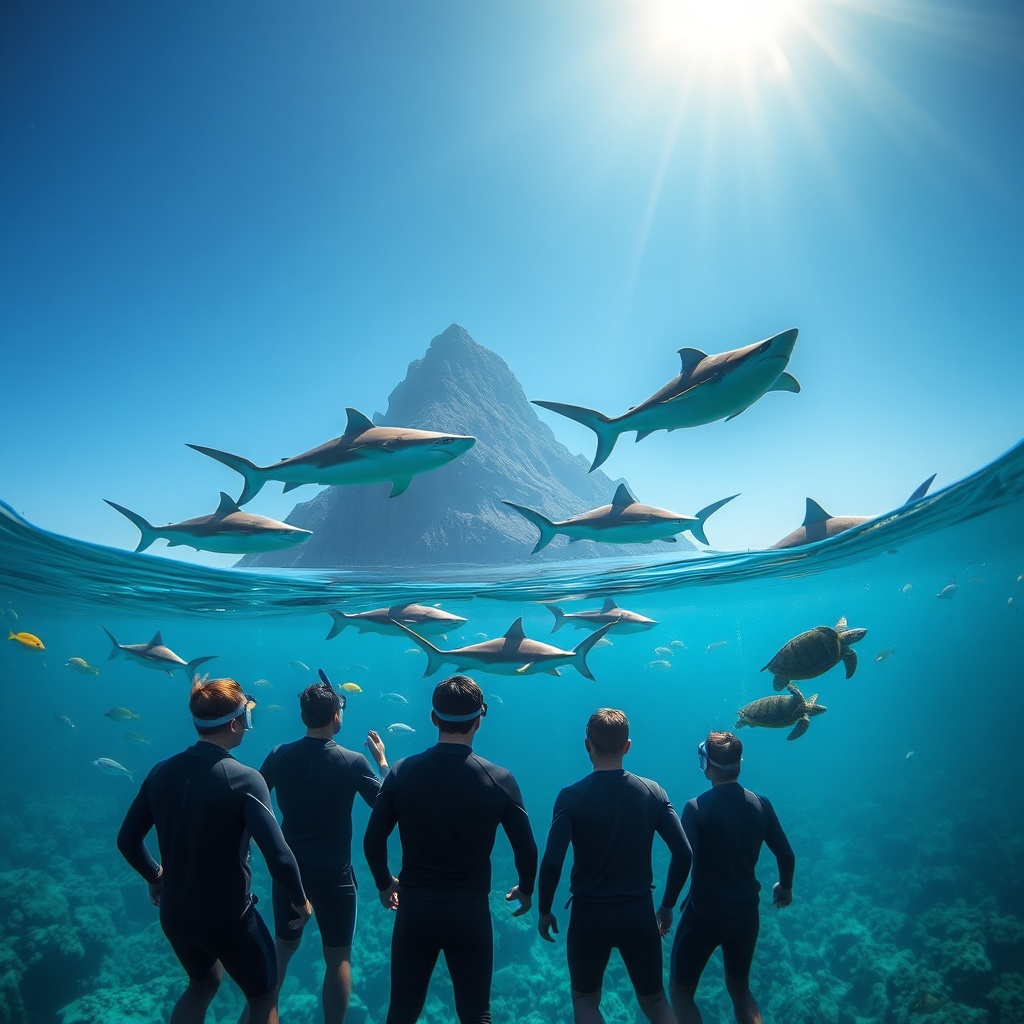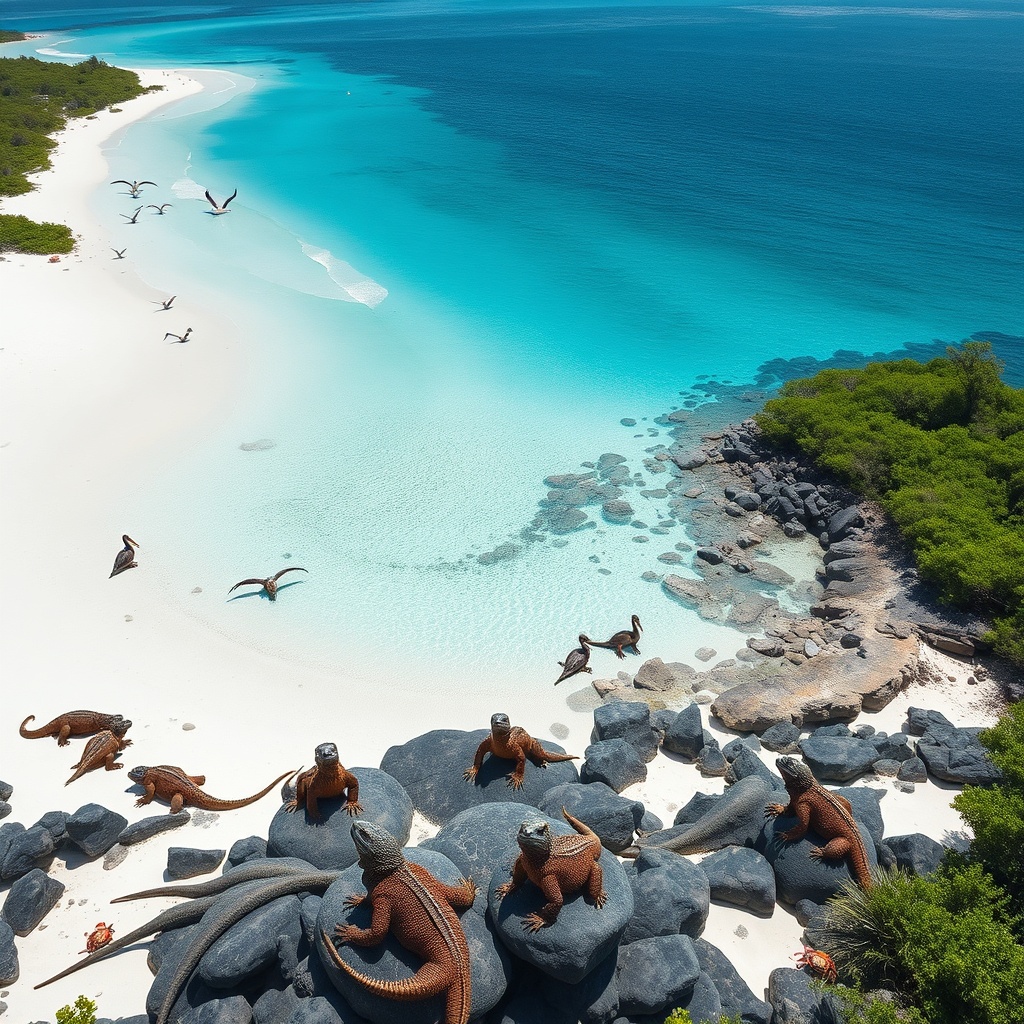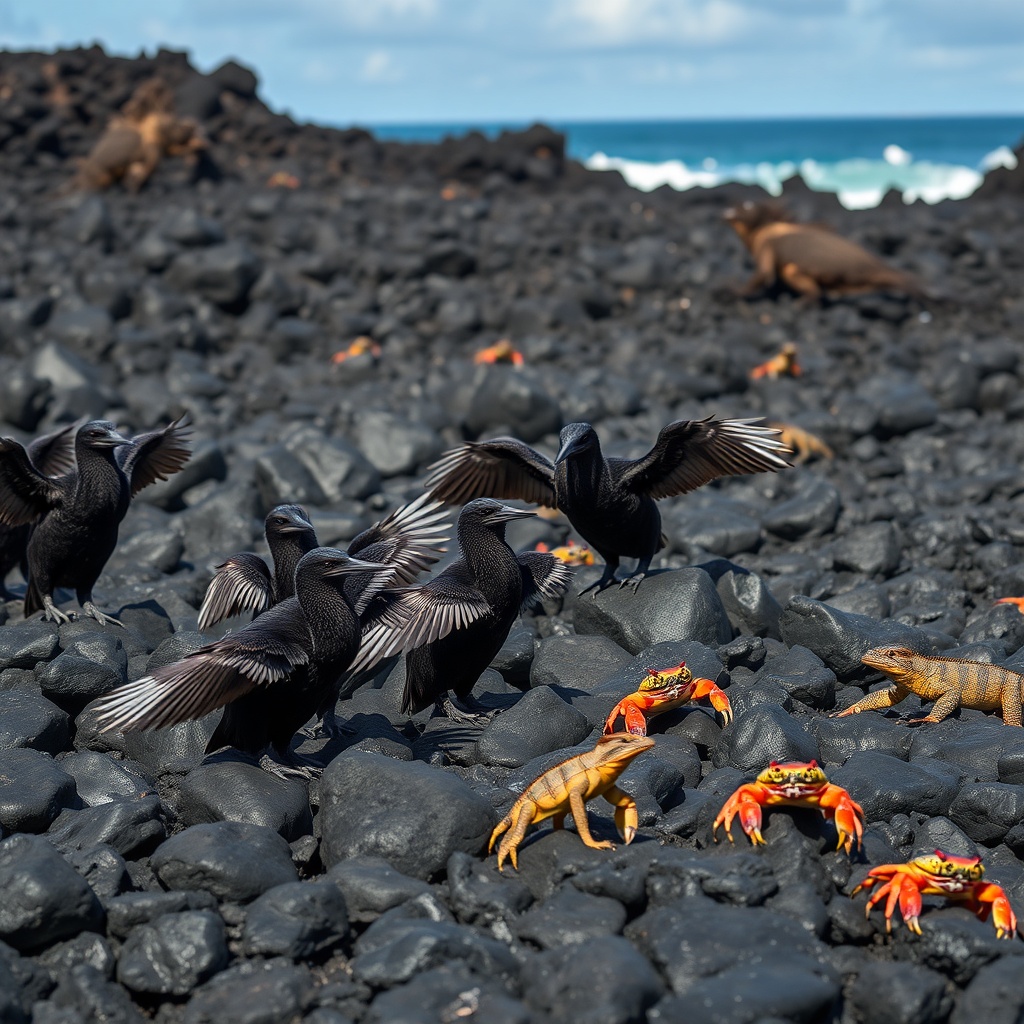Galápagos Islands: Wildlife Paradise
Have you ever dreamed of stepping into a place where evolution dances before your very eyes—a land so pristine that wildlife treats humans as part of the landscape, not intruders? Welcome to the Galápagos Islands, a magical Eden that inspired Charles Darwin's theory of natural selection and continues to awe travelers with creatures found nowhere else on Earth. In this comprehensive guide, you'll travel (at least in spirit!) from volcanic beaches bustling with marine iguanas, to misty highlands echoing with giant tortoise footsteps, and even beneath the waves into a marine wonderland rivaling any documentary. Whether you're a devoted nature photographer, a curious explorer, or simply longing for that out-of-this-world travel story, the Galápagos delivers raw, authentic, and heart-stirring adventures. Let's uncover the stories, secrets, and must-visit hotspots of this legendary wildlife paradise—where every moment brings the world’s most extraordinary animals right up close.

When you think of the Galápagos Islands, images of unique wildlife and untouched nature instantly come to mind. Yet, at the heart of this biodiversity paradise lies a place of science, hope, and dedication: the Charles Darwin Research Station. This institution is not just a research hub—it's a beacon for conservation and a living testament to the ongoing battle to protect the Galápagos' most iconic residents: the giant tortoises.
Let’s embark on a journey through the classic storytelling arc, inspired by Harmon's law, to discover how the Charles Darwin Research Station and its work with giant tortoises can inspire and benefit us all.
Once, the Galápagos Islands were a remote sanctuary, where giant tortoises roamed freely and the ecosystem thrived in delicate balance. For centuries, these ancient creatures shaped the landscape, their slow movements echoing the unhurried rhythm of island life.
But the arrival of humans changed everything. Whalers, pirates, and settlers hunted tortoises for food, introduced invasive species, and altered habitats. By the 20th century, the once-abundant giant tortoise populations were on the brink of extinction. The world was called to act.
In 1964, the Charles Darwin Research Station was established on Santa Cruz Island. Scientists, conservationists, and volunteers from around the globe crossed oceans to dedicate themselves to the preservation of the Galápagos’ unique wildlife, with a special focus on the giant tortoises.
Saving the tortoises was no easy feat. Eggs had to be rescued from the wild, hatched in safety, and the young tortoises reared until they were strong enough to survive. The team faced setbacks—disease, habitat loss, and limited resources. Yet, with international support and local commitment, they persevered.
Perhaps the most famous resident, Lonesome George, became a symbol of both hope and loss. As the last of his species, his story highlighted the urgent need for conservation. Despite the heartbreak of his passing, his legacy inspired renewed efforts and global awareness.
Today, thanks to decades of research and conservation, thousands of giant tortoises have been reintroduced to their native islands. Populations are slowly recovering, and the ecosystem is healing. The Charles Darwin Research Station has become a model for conservation worldwide, demonstrating the power of science, education, and community engagement.
But the journey is far from over. Climate change, tourism, and invasive species continue to threaten the fragile balance. The station’s work now includes not only breeding and reintroduction but also habitat restoration, environmental education, and international collaboration.
What can we learn from this story? The Charles Darwin Research Station teaches us that conservation is a continuous journey. By supporting sustainable tourism, respecting wildlife, and spreading awareness, each of us can play a part in protecting our planet’s natural wonders.
Visiting the research station is not just a tourist activity—it’s an opportunity to witness science in action, to meet the gentle giants of the Galápagos, and to become inspired to make a difference in your own community.
- Resilience: Just as the giant tortoises have survived against the odds, we too can overcome challenges with patience and perseverance.
- Collaboration: Conservation success comes from teamwork—across borders, disciplines, and generations. Collaboration is key in any aspect of life.
- Education: Knowledge empowers change. By learning about the world, we become better stewards of it.
- Responsibility: Every action counts. Whether it’s recycling, supporting conservation, or educating others, your choices matter.
| Aspect | Impact | How You Benefit |
|---|---|---|
| Wildlife Conservation | Restores endangered species | Ensures biodiversity for future generations |
| Research & Education | Inspires global action | Encourages critical thinking and curiosity |
| Sustainable Tourism | Supports local communities | Creates meaningful travel experiences |
If you ever visit the Galápagos, make sure to spend time at the Charles Darwin Research Station. Witness the living legacy of the giant tortoises, and let their story remind you that positive change is possible—one step, or one slow tortoise stride, at a time.
Keywords: Charles Darwin Research Station, giant tortoises, Galápagos Islands, conservation, wildlife

Imagine drifting through the crystal-clear waters of the Galápagos Islands, surrounded by the dramatic silhouette of Kicker Rock rising from the ocean. This iconic volcanic formation, also known as León Dormido, is not just a breathtaking sight—it’s a gateway to one of the world’s most thrilling snorkeling adventures.
For many travelers, snorkeling at Kicker Rock is a defining moment of their Galápagos journey. The waters here are teeming with marine biodiversity, offering encounters with creatures you may have only seen in documentaries. The real stars of the show? Sharks and rays—graceful, mysterious, and awe-inspiring.
- Geological Wonder: Kicker Rock is the remnant of a volcanic cone, split in two, forming a natural channel that attracts marine life.
- Wildlife Hotspot: The nutrient-rich currents draw in schools of fish, sea turtles, eagle rays, and, most famously, several species of sharks—including hammerheads and Galápagos sharks.
- Pristine Waters: Visibility is often excellent, making it ideal for observing wildlife in their natural habitat.
At first, the idea of swimming alongside sharks can be intimidating. But here’s the insight: sharks in the Galápagos are not interested in humans—they are focused on their own world. Observing them in their natural environment is not only safe with a guide, but also profoundly humbling. You’ll likely spot elegant rays gliding along the sandy bottom, their wings undulating like silk in the current.
This experience challenges you to step out of your comfort zone. It’s a reminder that fear often fades when replaced by understanding. By witnessing these animals up close, you gain a new respect for their role in the ecosystem and the importance of marine conservation.
- Go with a certified guide: Safety and education go hand in hand. Guides help you spot wildlife and ensure you follow sustainable snorkeling practices.
- Stay calm and move slowly: Sudden movements can startle marine life. Relax and let the animals come to you.
- Respect the environment: Don’t touch or chase the animals. The Galápagos is a protected area—your actions matter.
- Be present: Put away the camera for a moment and soak in the magic. These memories will last a lifetime.
| Wildlife | Best Time to See | Conservation Status |
|---|---|---|
| Hammerhead Sharks | June - November | Vulnerable |
| Spotted Eagle Rays | Year-round | Near Threatened |
| Galápagos Sharks | Year-round | Near Threatened |
| Green Sea Turtles | December - March | Endangered |
Snorkeling at Kicker Rock is more than a bucket-list adventure—it’s a lesson in coexistence and respect for nature. When you swim with sharks and rays, you become part of a story that stretches back millions of years. You leave not just with memories, but with a deeper commitment to protect our planet’s precious wildlife.
If you’re planning a trip to the Galápagos, make Kicker Rock a priority. The experience will challenge your perceptions, ignite your curiosity, and leave you with a sense of wonder that stays long after you return home.

Imagine stepping onto a stretch of powdery white sand, so fine it squeaks beneath your feet, with the turquoise Pacific lapping gently at the shore. Welcome to Tortuga Bay, one of the crown jewels of the Galápagos Islands and a true wildlife paradise.
In the spirit of traditional storytelling, let's embark on an eight-stage journey—one that not only reveals the wonders of Tortuga Bay but also offers insights to enrich your own adventures and appreciation for nature.
Most of us live in cities, surrounded by concrete and the hum of traffic. Our daily routines rarely include encounters with ancient reptiles or untouched beaches. Yet, the longing for a deeper connection with nature persists.
The Galápagos Islands beckon, their name synonymous with unique wildlife and evolutionary marvels. Among them, Tortuga Bay stands out for its serenity and biodiversity, promising an escape from the ordinary and a chance to witness the extraordinary.
You might hesitate—it's a long journey, and perhaps you wonder if it's worth the effort. But the stories of marine iguanas basking on sun-drenched rocks and the promise of pristine sands pull you closer.
Guides and naturalists in the Galápagos share their wisdom: respect the delicate ecosystem, tread lightly, and observe with patience. Their advice is invaluable for making the most of your visit while preserving this fragile paradise.
The walk to Tortuga Bay is an adventure in itself—a 2.5 km path through arid landscapes dotted with cacti and lava lizards. With each step, the anticipation builds until the bay's dazzling expanse comes into view.
Here, you encounter the marine iguanas, the only sea-going lizards in the world. They lounge in clusters, unbothered by your presence, their prehistoric forms a living testament to evolution. You may also spot Sally Lightfoot crabs, pelicans, and the occasional white-tipped reef shark in the shallows. The test? To observe without disturbing, to become a respectful guest in their world.
As you wade into the calm waters or kayak along the mangroves, you realize the importance of conservation. The beauty here is fragile—plastic waste, careless tourism, and climate change threaten its future. The ordeal is not just personal; it's a collective challenge to protect places like Tortuga Bay.
You leave Tortuga Bay with more than photos. You gain a renewed sense of wonder, a deeper respect for wildlife, and perhaps a commitment to travel more consciously. The lessons learned—about patience, observation, and stewardship—enrich your life long after you return home.
- Respect the Wildlife: Marine iguanas are unique to the Galápagos. Observe quietly and maintain a safe distance.
- Leave No Trace: Pack out all trash and avoid disturbing natural habitats.
- Embrace Slow Travel: Take your time to appreciate the landscape and its inhabitants. Mindful observation leads to richer experiences.
- Support Conservation: Choose eco-friendly tours and accommodations that prioritize sustainability.
| Wildlife | Best Time to See | Conservation Status |
|---|---|---|
| Marine Iguanas | Year-round | Vulnerable |
| Sally Lightfoot Crabs | Year-round | Least Concern |
| White-tipped Reef Sharks | December - May | Near Threatened |
Why Tortuga Bay is a Must-Visit for Nature Lovers ▼
Tortuga Bay offers a rare chance to see evolution in action, with species found nowhere else on Earth. Its untouched beauty and tranquility provide a sanctuary not just for wildlife, but for the human spirit seeking renewal.
In summary, Tortuga Bay is more than a destination—it's a reminder of our shared responsibility to protect the planet's wild places. By visiting with care and intention, you become part of the story, ensuring that future generations can experience the magic of the Galápagos.

Imagine stepping onto a surreal, otherworldly shore where the ground beneath your feet is sculpted by ancient volcanic forces, and the air is alive with the flutter of wings—though not all wings are meant for flight. Welcome to Punta Espinoza on Fernandina Island, a highlight of the Galápagos Islands and a true wildlife paradise.
This unique destination is famous for its flightless cormorants, a species found nowhere else on Earth. These remarkable birds, with their stunted wings and powerful legs, have adapted perfectly to their environment. Instead of soaring through the sky, they dive and swim with incredible agility, hunting fish in the rich coastal waters. Their evolution is a living testament to the power of isolation and adaptation—one of the core lessons the Galápagos offers the world.
What Makes Punta Espinoza Special?
- Flightless Cormorants: Endemic to the Galápagos, these birds are a living example of evolution in action. Their wings have become small and almost useless for flight, but their webbed feet and strong legs make them expert swimmers. Watching them dry their stubby wings on the black lava rocks is a scene you’ll never forget.
- Lava Landscapes: The terrain at Punta Espinoza is dominated by recent lava flows, creating a dramatic, moon-like landscape. Walking across these fields, you can see the patterns left by cooling magma and feel the raw power of the Earth’s geological processes. It’s a reminder of the dynamic nature of our planet.
- Rich Biodiversity: Besides cormorants, you’ll encounter marine iguanas basking in the sun, playful sea lions, and Sally Lightfoot crabs adding splashes of color to the dark rocks. Each species here has a story of adaptation, making Punta Espinoza a living classroom for anyone interested in evolution, ecology, or simply the wonders of nature.
Insights for Life: Lessons from Punta Espinoza
- Adaptability is Key: The flightless cormorant’s story teaches us that success isn’t always about sticking to the old ways. Sometimes, letting go of what no longer serves us—like wings for flying—opens up new opportunities. In our own lives, being adaptable can help us thrive in changing environments.
- Value of Uniqueness: The wildlife of Punta Espinoza is unique because of its isolation. Similarly, our individual differences can be our greatest strengths. Embracing what makes us different can lead to innovation and resilience.
- Respect for Nature: Witnessing the fragile balance of life in the Galápagos inspires a deeper respect for conservation. Every action we take, no matter how small, can impact the delicate ecosystems around us. Let’s strive to be mindful stewards of our planet.
| Wildlife | Unique Adaptation | Life Lesson |
|---|---|---|
| Flightless Cormorant | Lost ability to fly, gained swimming prowess | Adapt to thrive in new circumstances |
| Marine Iguana | Swims and feeds on algae in the sea | Embrace change to find new resources |
| Sally Lightfoot Crab | Bright colors for camouflage and warning | Stand out to survive and succeed |
Want to Visit Punta Espinoza? Here’s What to Know ▼
Access to Punta Espinoza is strictly regulated to protect its fragile ecosystem. Guided tours are available, ensuring minimal impact on wildlife. Bring sturdy shoes for the rough lava terrain, a camera for unforgettable moments, and an open mind ready to be inspired by nature’s ingenuity.
In summary, Punta Espinoza is more than just a travel destination. It’s a place where the drama of evolution unfolds before your eyes, and where every creature and rock tells a story of resilience, adaptation, and the beauty of life’s endless creativity. Whether you’re a wildlife enthusiast, a lover of unique landscapes, or simply seeking inspiration, Punta Espinoza offers insights that can enrich your perspective and encourage you to embrace change in your own journey.